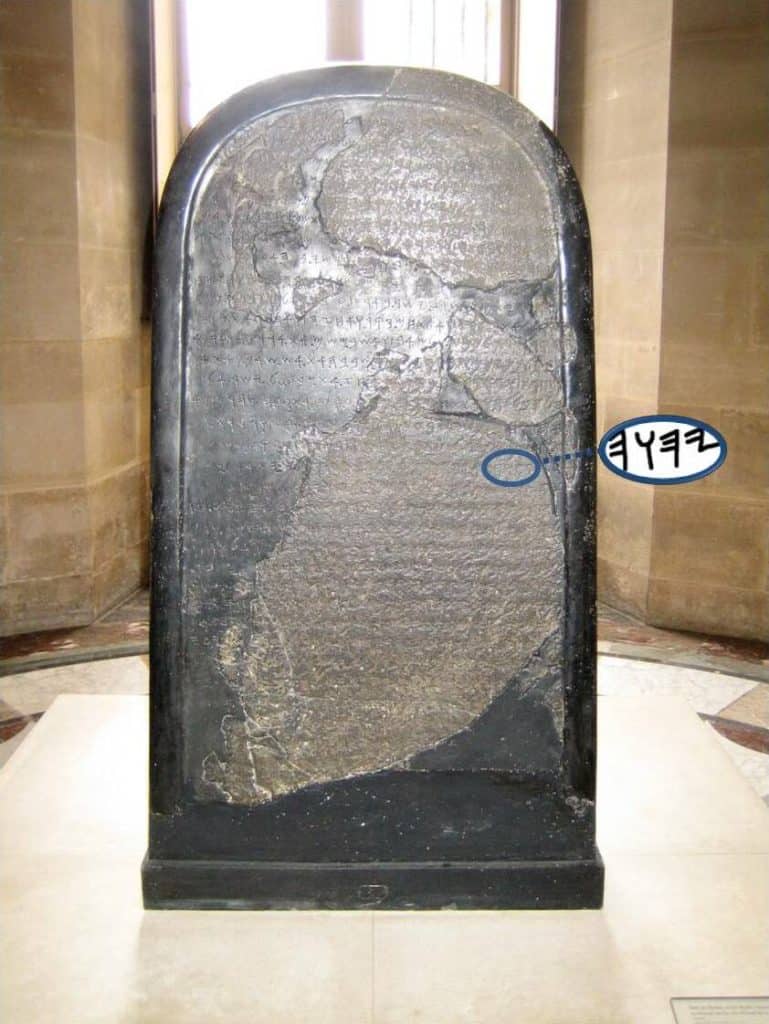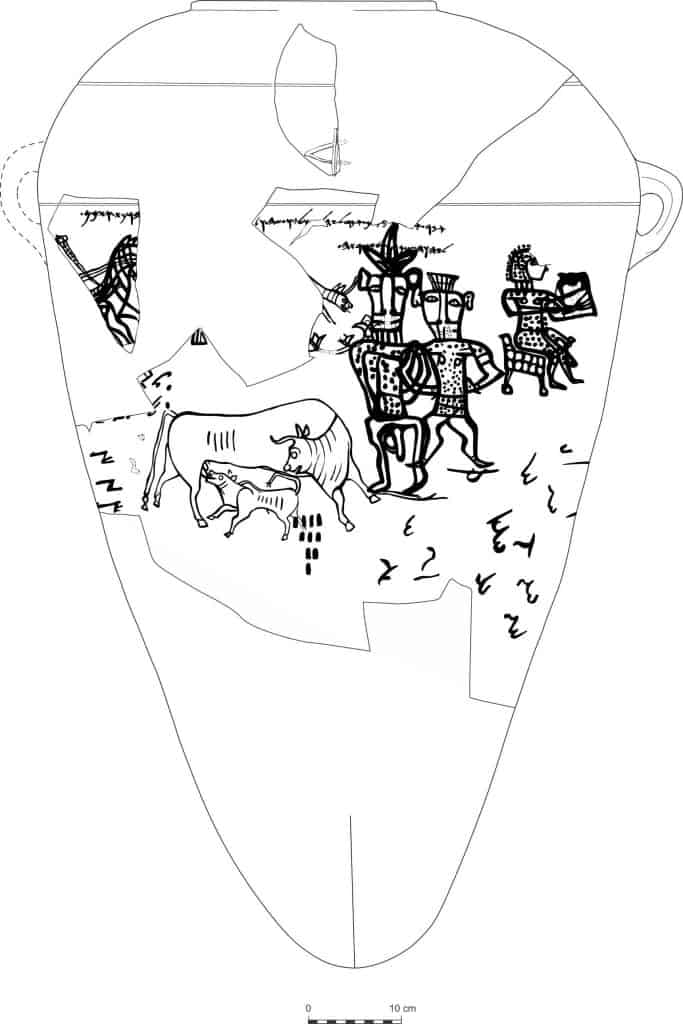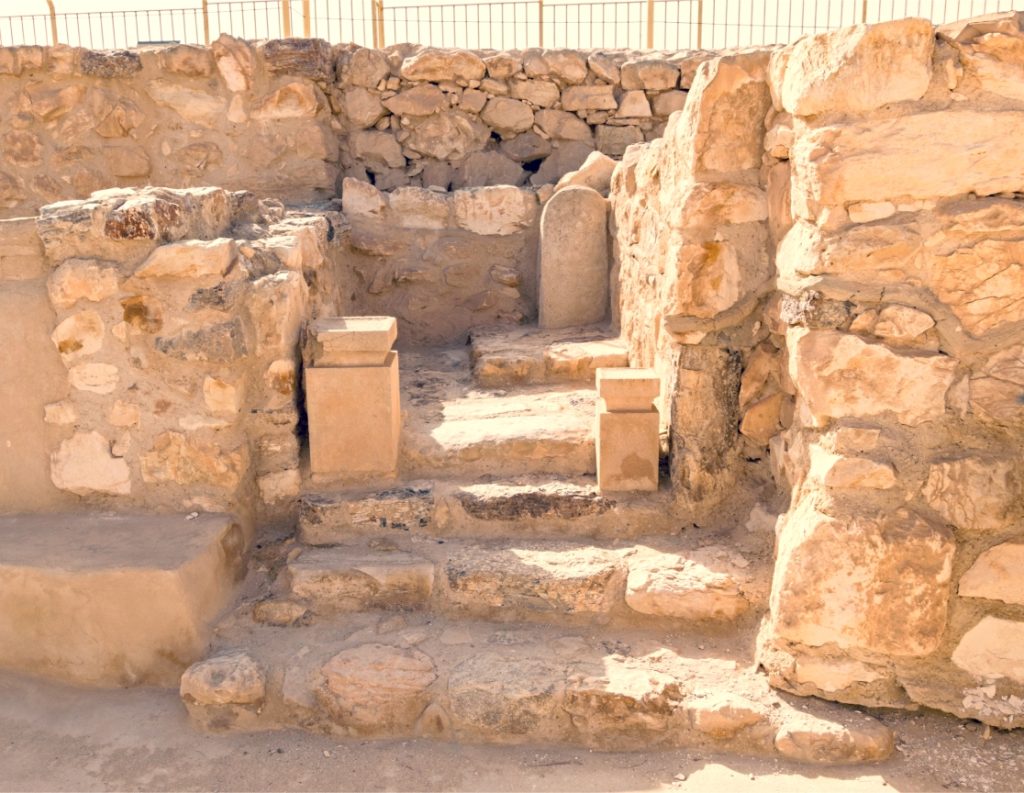The transition from polytheism to monotheism in ancient Israel is a complex and debated topic among historians and scholars. However, several theories and ideas attempt to explain this transition.

Credit: Louvre Museum, CC BY-SA 3.0, via Wikimedia Commons
Another critical aspect of the Origins of Judaism is the transition from polytheism to monotheism. If you read the Hebrew Bible, you see that the Jews became monotheistic through a revolution by receiving the ten commandments atop Mt. Sinai. Another theory suggests that the shift from polytheism to monotheism was slow and gradual and took place over a long period.
So this theory suggests that ancient Israelites focused more on worshiping Yahweh, the God of Israel, and gradually abandoned worshipping other gods. Over time, the worship of Yahweh became more central to the Israelite religion, and other gods became less important.
God in Judaism
Traditionally, Judaism holds that Yahweh, the god of Abraham, Isaac, and Jacob and the national god of the Israelites, delivered the Israelites from slavery in Egypt and gave them the Law of Moses at Mount Sinai as described in the Torah. Furthermore, Jews traditionally believe in a monotheistic conception of God (God is only one), which is both transcendent (wholly independent of and removed from the material universe) and immanent (involved in the material universe).

Credit: Nathaniel Ritmeyer, CC BY 4.0, via Wikimedia Commons
So we know today that the early Israelites were polytheistic and worshipped Yahweh alongside various Canaanite gods and goddesses, including El, Asherah, and Baal. In later centuries, the god El and Yahweh became conflated, and El linked epithets such as El Shaddai applied to Yahweh alone, and other gods and goddesses such as Baal and Baal Asherah were absorbed into the Yahwist religion.

Towards the end of the Babylonian captivity, the existence of other gods was denied, and Yahweh was proclaimed the creator deity and sole divinity to be worshipped. During the Second Temple period, speaking the name of Yahweh in public became regarded as taboo.
Biblical References to God of Israel
In the earliest Biblical literature, Yahweh has characteristics of a storm god typical of ancient Near Eastern myths, marching out from Edom or the Sinai desert with the heavenly host of stars and planets that make up his army to do battle with the enemies of his people Israel.

There are multiple poetic refrains in the Hebrew Bible claim that Yahweh embarked from the region of Edom. It has also been suggested that the Edomite deity Qōs might have been the same as Yahweh rather than a separate deity, with its name a title of the latter. So aside from their territorial origins, various common characteristics between the Yahwist and the Edomite cult of Qōs hint at a shared connection.
The Origins of Judaism: The Gods of Israel and the Shasu
So the Origins of Judaism might be found somewhere else. Some scholars link the Israelites and YHWH with the Shasu. The Shasu were Semitic-speaking cattle nomads in the Southern Levant from the late Bronze Age to the Early Iron Age or the Third Intermediate Period of Egypt. Moreover, they were organized in clans under a tribal chieftain and were described as brigands active from the Jezreel Valley to Ashkelon and the Sinai. Furthermore, two Egyptian texts, one dated to the period of Amenhotep III (14th century BCE), the other to the age of Ramesses II (13th century BCE), refer to Yahu in the land of the Shasu”.
The “hieroglyphic rendering corresponds very precisely to the Hebrew tetragrammaton YHWH, or Yahweh, and antedates the hitherto oldest occurrence of that divine name – on the Moabite Stone – by over five hundred years.” K. Van Der Toorn concludes: “By the 14th century BCE before the cult of Yahweh had reached Israel, groups of Edomites and Midianites worshipped Yahweh as their god.”
The Origins of Judaism: Conclusions
In Conclusion: The origins of Judaism lie in the Bronze Age amidst polytheistic ancient Semitic religions, specifically evolving out of the polytheistic ancient Canaanite religion, then co-existing with Babylonian religion, and syncretizing elements of Babylonian belief into the worship of Yahweh as reflected in the early prophetic books of the Hebrew Bible.
During the Iron Age I, the Israelite religion became distinct from the Canaanite polytheism, out of which it evolved. This process began with the development of Yahwism, the monolatristic worship of Yahweh, one of the Canaanite gods, that acknowledged the existence of the other Canaanite gods but suppressed their worship. Later, this monolatristic belief cemented into a strict monotheistic belief and worship of Yahweh alone, rejecting the existence of all other gods, whether Canaanite or foreign.







